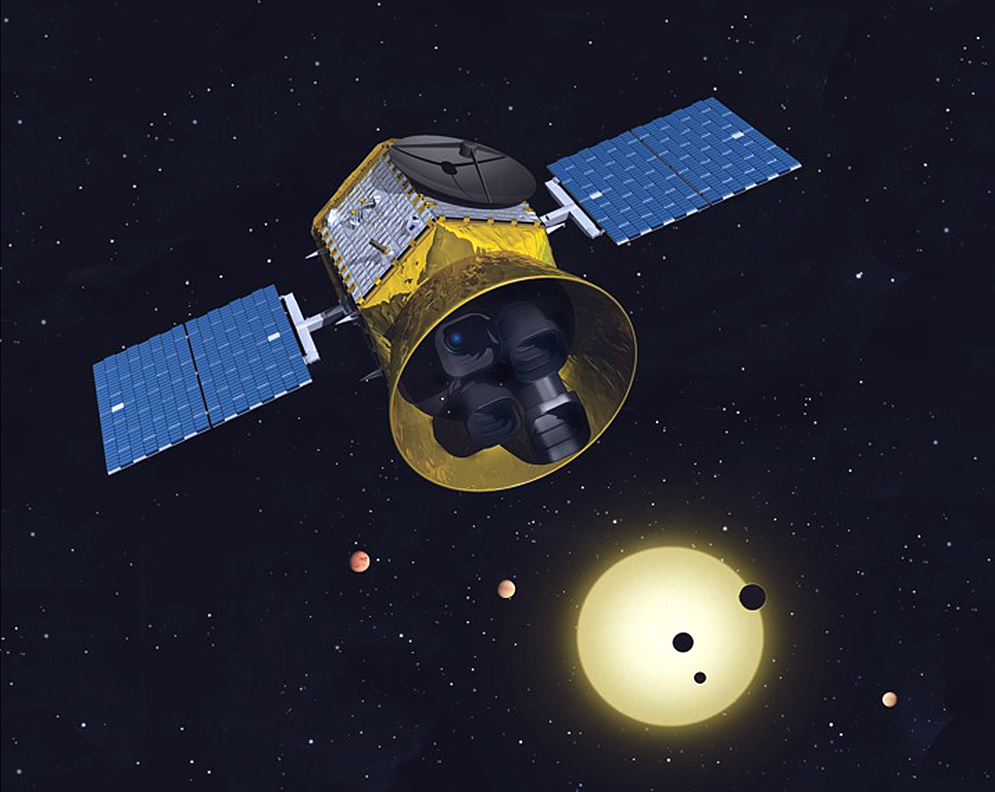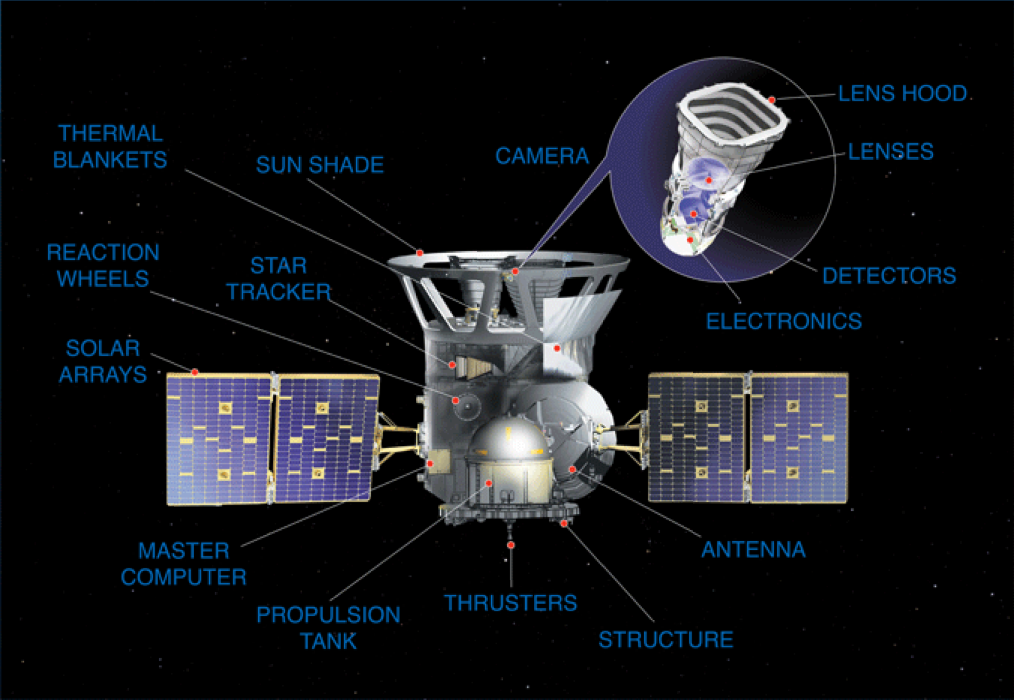Transiting Exoplanet Survey Satellite (TESS) launched on April 18, 2018 is a NASA-sponsored Astrophysics Explorer-class mission that is performing a near all-sky survey (over 85% of the sky) in two years to search for planets transiting nearby stars (within ~200 light years). The primary goal of TESS is to discover planets smaller than Neptune that transit stars bright enough to enable follow-up spectroscopic observations that can provide planet masses, sizes, densities, and atmospheric properties. Of these, approximately 300 are expected to be Earth-sized and super-Earth-sized exoplanets.
In the 2-year prime mission, TESS monitors over 200,000 main-sequence dwarf stars. TESS was approved for an extended mission that starts in July 2020.

Credits NASA/MIT
The powerful cameras on the spacecraft will stare for at least 27 days, monitoring main-sequence dwarf stars to detect planetary transits. Photometry of these pre-selected targets is recorded every 2 minutes. TESS also obtains full-frame images (FFIs) of the entire field of view at a cadence of 30 minutes to facilitate additional science.
In the extended mission TESS will change focus to become a community science focused mission. A new 20-second cadence data mode will be introduced and the FFI cadence will be changed to 10-minutes.
TESS has four identical, highly optimized, red-sensitive, wide-field CCD cameras that together can monitor a 24 degree by 90 degree strip of the sky. The cameras have an effective aperture size of 10 cm (about 4 inches) in diameter. TESS uses a red-optical bandpass covering the wavelength range from about 600 to 1000 nm.

Credits: NASA GSFC